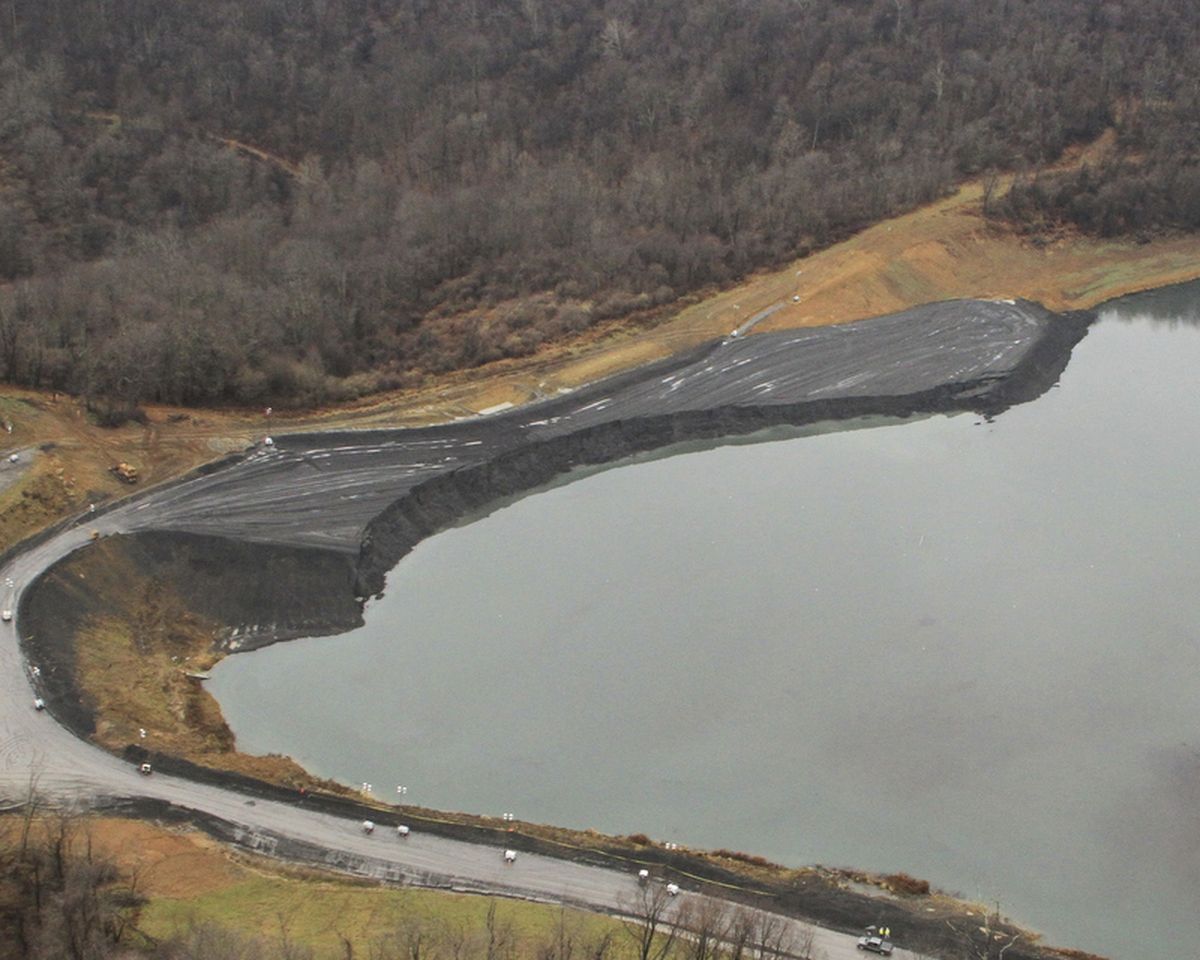Critic questions way coal firms build slurry ponds

MORGANTOWN, W.Va. (AP) — Slurry pond failures like the one that swallowed a bulldozer and its driver last week at a West Virginia coal mine could be avoided if the waste pits were built to strict construction standards that regulators ignore, said a mine safety expert and frequent critic of the coal industry.
For at least a decade, state and federal regulators have allowed coal companies to build or expand massive slurry ponds atop loose and wet coal waste, said Jack Spadaro, an engineering consultant and former director of the National Mine Health and Safety Academy.
“They’re building on top of the existing slurry, and therein lies the problem,” Spadaro said. “It’s wet and it has no stability. It’s creating hazards for all of us downstream.”
In all, there are 596 coal slurry impoundments in 21 states. West Virginia has 114, more than any other state, according to the federal Mine Safety and Health Administration. Kentucky has 104, while Illinois is third with 71.
Spadaro’s criticisms follow the Nov. 30 failure of a section of embankment at Consol Energy’s Robinson Run mine slurry pond near Lumberport in the north-central part of the state. Two workers escaped after pickup trucks slid into the massive pond, but the dozer driver is missing.
“Since we’re still in recovery mode and have barely begun the investigation, it would be premature to comment at this time,” MSHA spokesman Amy Louviere said.
The West Virginia Department of Environmental Protection also declined comment on Spadaro’s charges, but Bill Raney, president of the West Virginia Coal Association, said impoundment failures are rare.
“These are the most scrutinized and most engineered earthen structures in the world, certainly in this country,” he said. “They’re monitored routinely. They have lots of eyes looking at them. … Anytime there’s a heavy rainfall, the agencies are out there looking at them.”
Pennsylvania-based Consol was working to raise the elevation of the impoundment when the accident happened, vice president for safety Tom Barletta said. Once the worker is found, the company will determine what happened “so we can learn from it and prevent similar incidents from occurring in the future,” Barletta said.
The pond encompasses about 78 acres and is estimated to hold at least 1.6 billion gallons of wastewater, the equivalent of more than 2,500 Olympic-sized swimming pools.
Slurry is a byproduct of washing coal to help it burn more cleanly. Companies have disposed of the dirty water, silt and solids in various ways over the years, injecting it into abandoned mines, damming it in huge ponds like the one at Robinson Run and, less commonly, disposing of it with a costly dry filter-press process.
Impoundments typically hold up over time. But they do fail, and in spectacular fashion.
In 1972, an earthen dam in Buffalo Creek in southern West Virginia collapsed after heavy rain, unleashing 130 million gallons of water, sludge and debris that killed 125 people, injured 1,100 and left 4,000 homeless.
Spadaro dedicated his life to preventing that sort of disaster from happening again and helped write the nearly 40-year-old regulations that are now on the books to guide slurry pond construction. The regulations give the government and coal companies detailed design, compaction strength and other criteria so the structures will withstand internal pressures and additional stress from big rain storms.
The regulations require the operator to do daily, quarterly and annual inspections, while the state must make monthly checks. MSHA relies partly on data provided by the companies to spot problems, which critics see as a weakness in the system.
Spadaro is not the only one to question the soundness of impoundments.
Retired miner-turned-activist Joe Stanley raised concerns over the Brushy Fork impoundment in southern West Virginia last year, but his complaints were dismissed by state regulators, and their decision was upheld by the federal Office of Surface Mining Reclamation and Enforcement.
Stanley called Bushy Fork “the biggest and the baddest” of all impoundments and said MSHA inspectors routinely found violations during its construction. But fines weren’t levied and construction wasn’t stopped.
“They just let them keep going, and then they say, ‘Well, there’s no way to fix this now, so let’s just change the plan.’ They’re hodge-podging this stuff.”
He heavily criticized state regulators and said if it weren’t for MSHA, “I think all the damn things would fall down. Immediately.”
Just two years ago, MSHA said it had improved oversight of impoundments, with better training and a new handbook on dam management.
The agency made the comments on the 10th anniversary of a disaster in Martin County, Ky., when slurry burst through the bottom of the Martin County Coal Corp.’s 68-acre holding pond, sending black goo through an underground mine and into 100 miles of waterways. The spill in 2000 polluted the water supply of more than a dozen communities and killed aquatic life before reaching the Ohio River.
Massey Energy eventually paid $46 million for the cleanup, along with about $3.5 million in state fines and an undisclosed sum to residents.
Spadaro, who helped investigate that accident, believes MSHA could go further, requiring better engineering evaluations of potential weak spots in impoundments.
He claims regulators at all levels continue to go easy on the industry in favor of coal production. Rather than require companies to build new dams on solid earth or dispose of the wastewater and refuse through a drying system, they allow the operators to raise the height of existing dams and ponds.
Federal law, he said, requires impoundments to be stable during all phases of construction.
“Well, if you build a dam on top of 80 feet of fine coal waste that’s wet,” Spadaro said, “that is not stable material.”